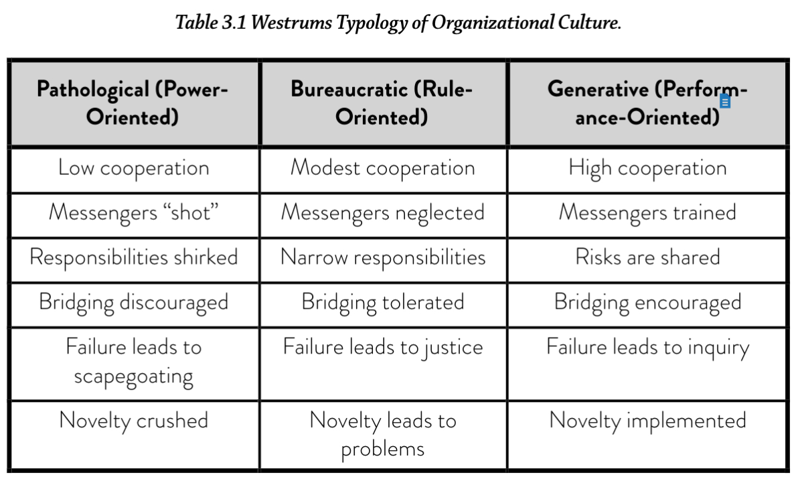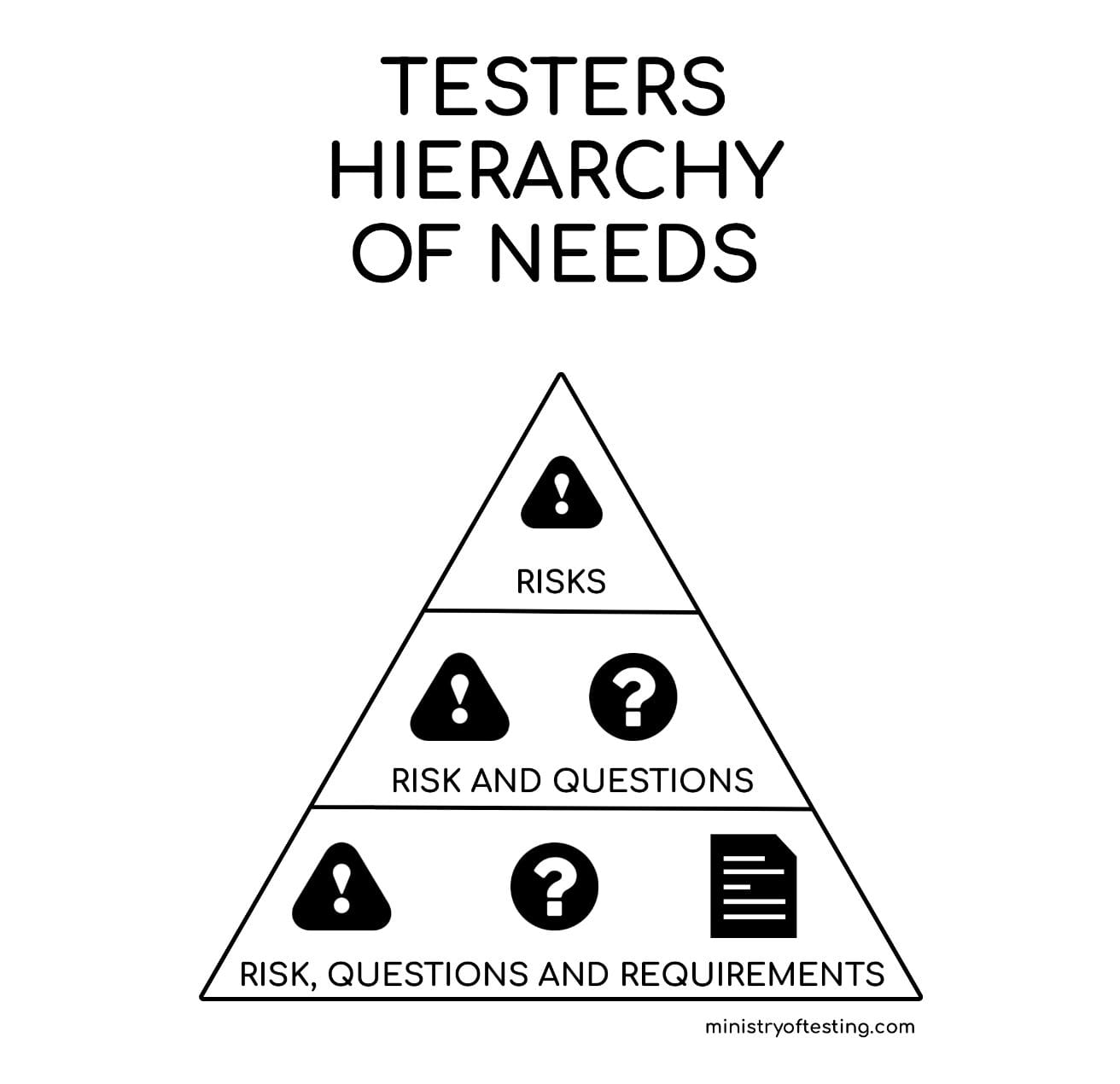We all work with Risks, Questions and Requirements
Risks, Questions and Requirements are surely part of the tester's hierarchy of needs. As I am exploring new fields, I am seeing how these needs are also a key part of other competence areas' daily needs.

Risks, Questions and Requirements are surely part of the tester's hierarchy of needs. As I am exploring new fields, I am seeing how these needs are also a key part of other competence areas' daily needs. Let's bridge the gaps - and collaborate across all functions that work with risks, questions and requirements. We have more in common than what sets us apart.
We all work to assist the company in reaching business goals. Our impact might be considered a sidekick and a sunk cost. Often it's not given proper attention and findings are considered obstructive. Yet even if we sometimes are similar to paying for insurance, we are here for a reason. We might as well work together to align with business goals. That's what performance-oriented organizations do - they cooperate, share risks and bridge the organisation.

Testers Hierarchy Of Needs
Originally posted by Rosie in the Ministry of Testing LinkedIn Group (thank you for the inspiration for this post):

Testers work primarily as a part of a (software) delivery organisation, focusing on the risks, questions and requirements of the product as a whole or the release/project in particular. They work with tools and techniques that handle and investigate risks and requirements. They are often the question-askers of the IT delivery teams. Their top reference is often the CTO - as they are part of building an IT solution that supports the business goals.
Governance, Regulations and Compliance
Staff in the GRC teams usually have the Chief Legal Officer as their top reference, if such a role exists. It could be part of a legal team or something on a retainer outside the company's usual operations. It's often seen when the company work under a "License to Operate" - either by an industry regulation or governmental regulation. More and more companies have to work under government regulations - the compliance requirements are coming for you too!
The GRC people focus on that nothing stands in the way of following the laws and regulations. They too have frameworks for risk mitigation, probing for uncovered areas and wanting the requirements to be objective and verifiable.
Audit and QA/QC
The QA/QC team - aka Quality Assurance and Quality Control - are not testers as such. In many companies in the life science industry, QA/QC is a function that focuses on procedures being followed. Yet as the testing team above, they too work with risks, questions and requirements. They have frameworks for exploratory testing and for controlling that governance is followed.
Similarly are auditors focused on the contracts and governance being followed. Auditors would as both testers, GRC and QA/QC look towards objective evidence being logged that the system (in the broadest sense) follows the requirements to the letter. Nothing more, nothing less.
Both Test teams, GRC teams, Audit and QA/QC teams work with risks, questions and requirements - let's collaborate.



